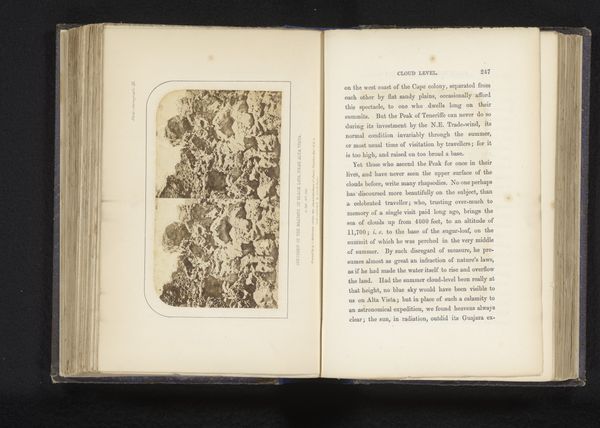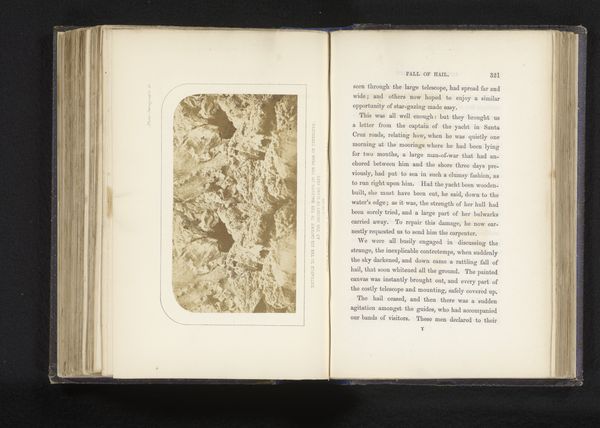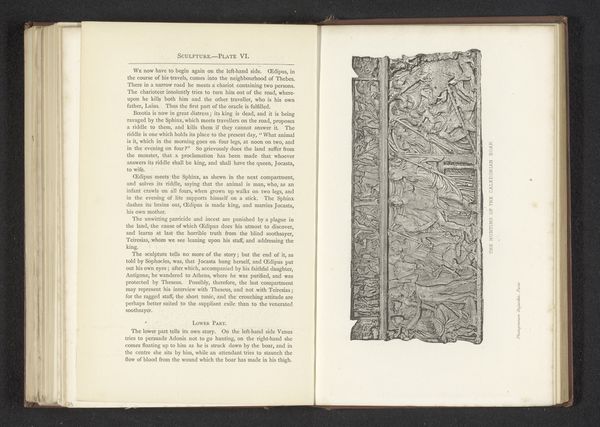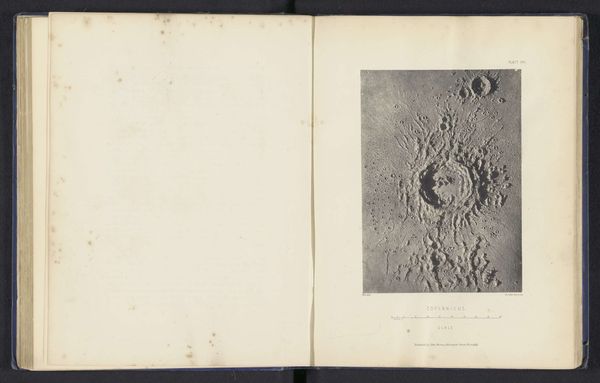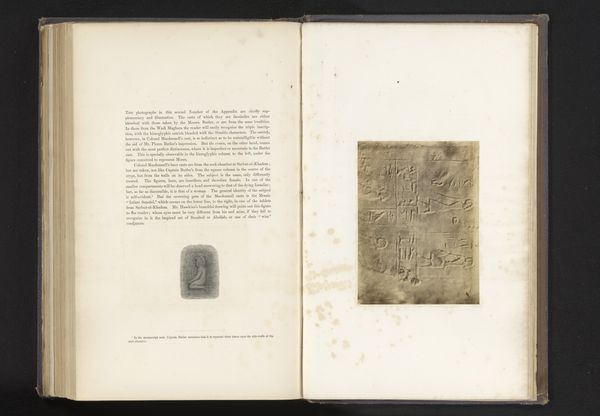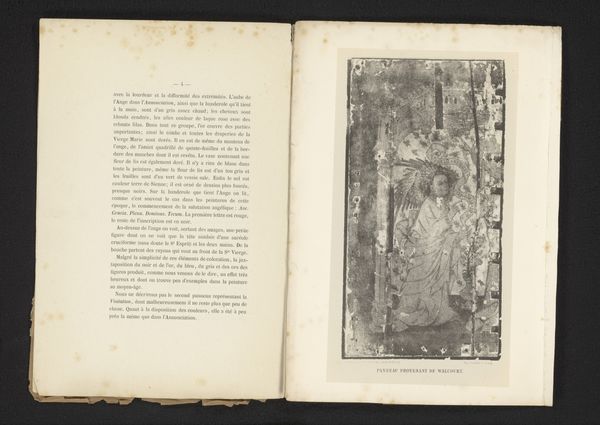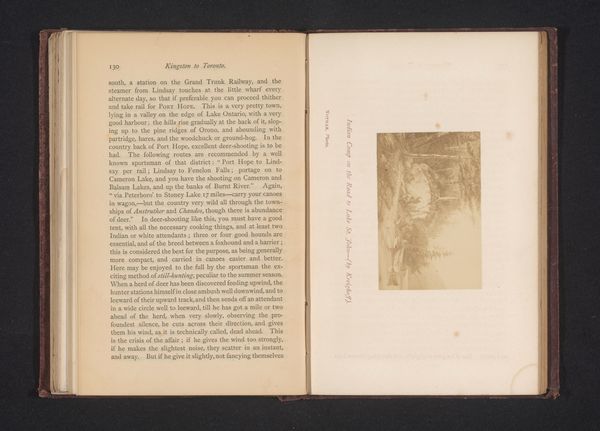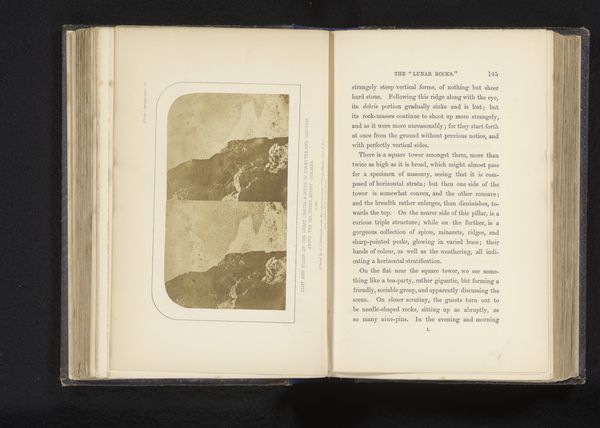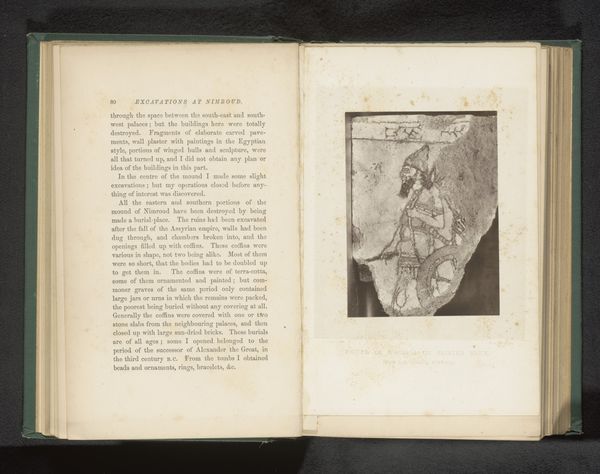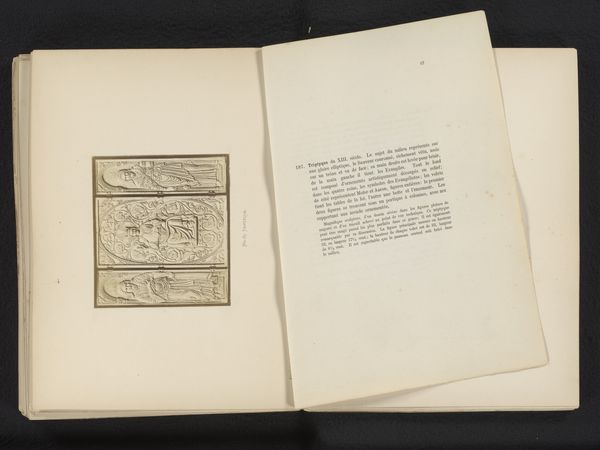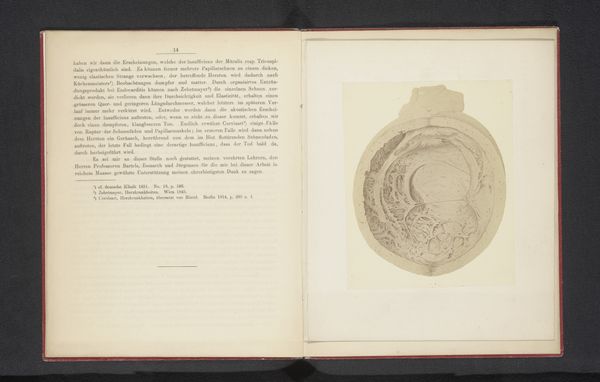
print, textile, photography, engraving
#
still-life-photography
# print
#
textile
#
photography
#
geometric
#
engraving
Dimensions: height 84 mm, width 117 mm
Copyright: Rijks Museum: Open Domain
Curator: Here in front of us is "Gipsmodel van de maankrater Copernicus," dating back to before 1882, presently held at the Rijksmuseum. It seems to be a photograph of an engraving displayed within a book. Editor: Immediately, I’m struck by the texture—it's so stark. The crater, dramatically lit, dominates the page. It looks so alien and yet, here it is, presented like any scientific study. Curator: Exactly. What you're responding to, that contrast, is deliberate. This image captures a plaster model of the lunar crater Copernicus. Consider the historical context: space exploration was still a nascent dream. Models like these were vital for understanding the cosmos, and for disseminating knowledge. Editor: So, it's an image of a model. I am fascinated by that nesting of realities: moon to model to photograph. It also reflects how knowledge itself gets constructed—layers of interpretation shaping our understanding of "truth," just like overlapping cultural assumptions dictate whose visions of outer space dominate public discourse. Curator: You're right. This image isn't just about craters; it's about how we create images of the universe to fit within cultural frameworks. In terms of symbolism, circles, rings, and geometric shapes were loaded with ancient meanings across numerous cultures, echoing primordial notions of creation and wholeness. Seeing those same forms now as scientific data invites interesting contrasts. Editor: It speaks volumes about the scientific gaze too, a colonizing one. Taking something immense and beyond reach and trying to fit into existing taxonomies. Are we understanding or are we diminishing by dissecting it into geometry? What human story does this image of the moon, once so symbolically rich, try to suppress by its apparent "objectivity?" Curator: Those questions underscore a larger human drama. Our need to order, explain, maybe even conquer what is inherently untamable. This singular photo sparks questions about the interplay between myth and data. Editor: Looking at it now, that crater becomes a Rorschach test of sorts. The starkness makes me confront the vastness of the unknown but framed through a Victorian scientific quest for rational understanding. It invites one to pause and really examine the implications of how and what we observe, both in art and science.
Comments
No comments
Be the first to comment and join the conversation on the ultimate creative platform.
